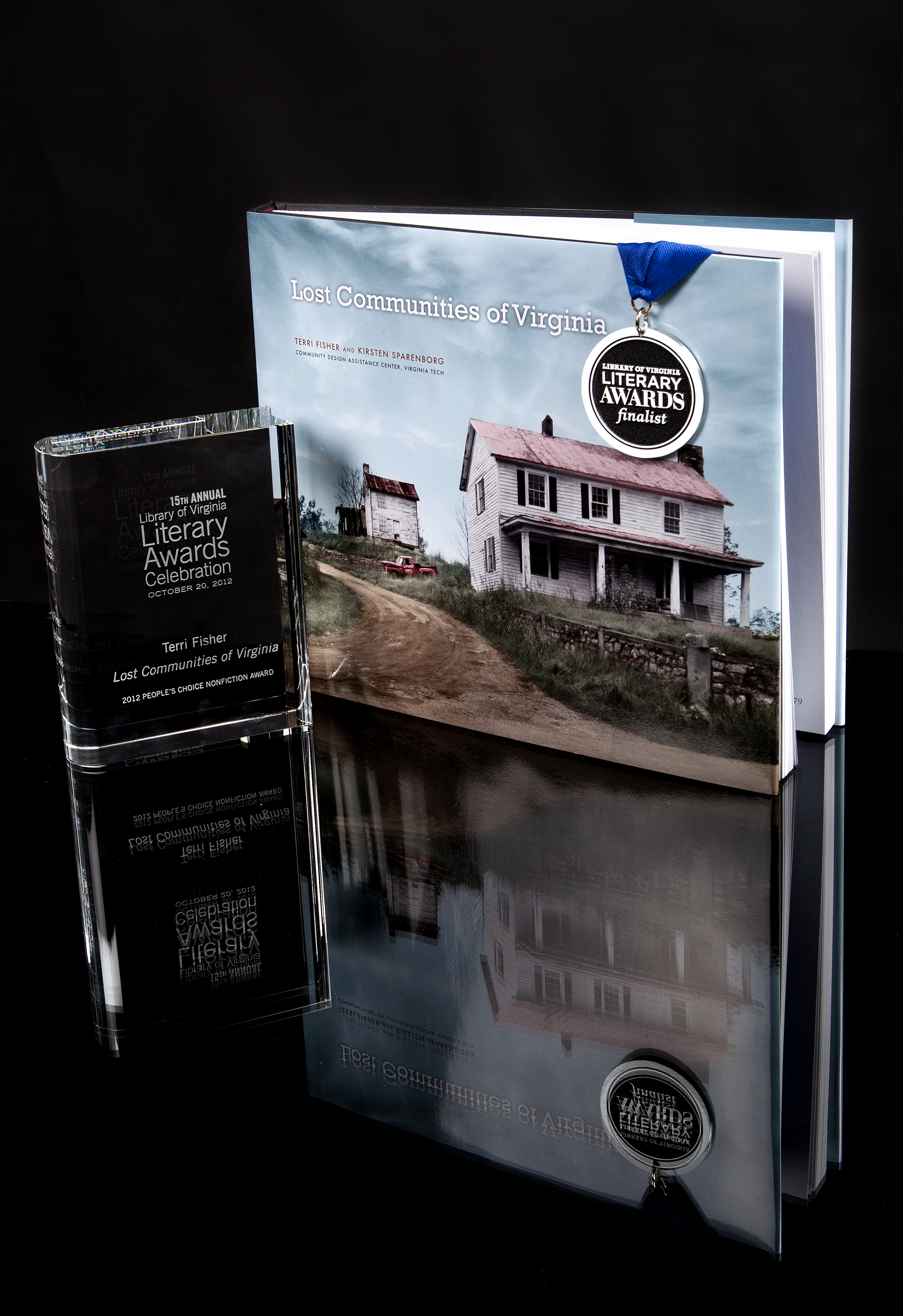'Lost Communities of Virginia’ wins Library of Virginia’s People’s Choice Award, Outstanding Historic Preservation Research Effort Award

What started as a drive through the countryside is now an award-winning book documenting the history of 30 Virginia communities that are off the beaten path and in danger of being forgotten.
The “Lost Communities of Virginia” by Terri Fisher and Kirsten Sparenborg recently received two distinguished honors: the Library of Virginia’s People’s Choice Award for Nonfiction and Preservation Virginia’s 2012 Outstanding Historic Preservation Research Effort Award.
The Library of Virginia’s People’s Choice Awards were created by the Library of Virginia to allow readers to vote on their favorite works either written by Virginia authors or featuring Virginia subjects. Winners are decided by readers voting online and in libraries, and “Lost Communities of Virginia,” competing with works from nationally and internationally renowned authors, won the popular vote for nonfiction.
The book was also recently honored with Preservation Virginia’s 2012 Outstanding Historic Preservation Research Effort Award, which is given annually to an individual or entity that has contributed to the cause of historic preservation or archaeology within Virginia through research or education. Preservation Virginia is a non-profit organization that was originally founded to preserve Virginia’s cultural and historic heritage.
“Lost Communities of Virginia” rediscovers small communities across the commonwealth, telling their stories through photographs, interviews with longtime residents, and historical information.
The idea for the book originated with a drive through the Southwest Virginia countryside, when Kirsten Sparenborg, then an intern for Virginia Tech’s Community Design Assistance Center, happened upon Eggleston, Va. Upon her return to the center, she discussed her observations with Elizabeth Gilboy, the center’s director. Gilboy saw the potential for a book, realizing that not only was there likely an interesting history and story behind the seemingly forgotten town, there had to be numerous other “lost communities” like it with stories to tell.
“Lost communities are places that have lost industries, transportation modes, or ways of life,” said co-author Terri Fisher, outreach and projects coordinator for the Community Design Assistance Center. “So they might have lost an industry — like textiles or tobacco — or a transportation mode: If the train no longer stops, or if the road bypasses it, that makes it a completely different place than it once was. And the way of life -- think of an old general store with people meeting around the pot-bellied stove gossiping, or doing business, or just knowing their neighbors. That’s a completely different thing today ... We don’t have those places like we once did.”
The drives through the countryside to find these special places continued, and Sparenborg visited 2,600 small communities across the state, photographing 548 of them. Then, based on criteria related to geography and history as well as the type of community, a panel of professors from the College of Architecture and Urban Studies selected the 30 communities featured in the book. Fisher revisited the selected communities, taking additional photographs, speaking with residents, and noting any additional changes to the communities following Sparenborg’s initial visits.
“Lost Communities of Virginia” shares the history of these communities through historical fact and personal narrative collected through Fisher’s extensive research and interviews.
“What’s really good about the book is that there are interviews with people who lived there during the heyday, who are older, and it is so important to document the history from their eyes because they are passing away, Gilboy said. “To hear somebody talk about their lives … that’s the history.”
However, the featured communities are not written off as lost forever. The authors provide information about the future possibilities for the communities, and upcoming projects related to the book may even enhance those futures.
The Community Design Assistance Center is working to make sure people can not only read about these communities, they can experience them firsthand. Their next step is to create driving tours and maps that will include the “lost” communities, points of interest, and businesses related to the concept, bringing increased traffic and economic benefits to these towns. They are also hoping to add a mobile app and website in the future.
“This is a natural fit for us because, with our projects that are in rural areas, we drive through these communities and see old buildings and wonder about them — and work in them — so this allows us to celebrate these places,” Gilboy said. “I think this is the perfect example of how outreach and research merges together to benefit communities.”



